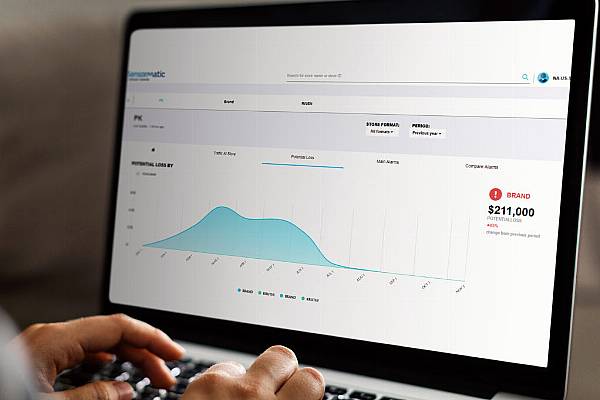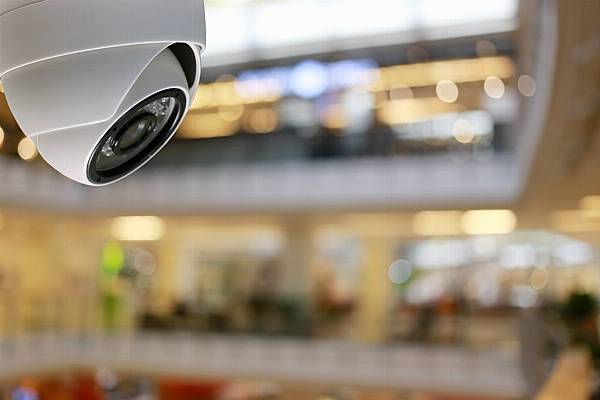Sensormatic Solutions explores the level to which shrinkage has become an issue in the retail environment, and what tools are at businesses’ disposal to tackle it.
Retailers anticipate a certain degree of shrinkage from their day-to-day operations. Generally, the anticipated rate of retail shrink ranges between 1% to 1.5% of total sales, with rates surpassing 1.5% considered high shrink.
Retail shrinkage primarily stems from four sources: external theft, including organised retail crime; internal or employee theft; vendor or supplier theft; and administrative control failures leading to unknown losses.
“Many think that external theft is the most prominent source of shrink, but it is often not the case,” says Sean Lee, EMEA Regional VP and GM, Sensormatic Solutions. “Our own research shows that internal theft is just as common as external theft – combined, both typically account for 60% to 70% of the total shrink value.”
A Global Issue
Irrespective of the market, there is a noticeable upward trend in shrinkage rates. The latest British Retail Consortium (BRC) Crime Survey in the UK revealed significant increases in violence and shop theft, with £953 million (€1.1 billion) lost to customer theft in the most recent year, marking a consistent long-term rise and nearly doubling since 2016-17. Furthermore, the BRC reports a 27% surge in theft incidents across ten major UK cities, with some cities experiencing an increase of up to 68%.
In the United States, data from the National Retail Federation (NRF) indicates that retail shrink reached 1.6% of sales in 2022, resulting in a loss of $112.1 billion (€102.2 billion), compared to $93.9 billion (€85.6 billion) in 2021 – which equates to an increase of 19.4%.
Australia is similarly grappling with a serious shrinkage issue. The Australian Retailers Association (ARA) estimates the stock loss problem at 2% to 3% of total retail sales, impacting the profits of leading supermarket groups. Retail theft has surged to record levels in Australia, illustrated by by a 23.7% increase in store theft in New South Wales from 2021 to 2022, the home state of a third of Australians.
“With shoplifting costing Australian retailers AU$2.3 billion (€1.41 billion) annually, it’s no wonder shoplifters are not only a problem for the success and survival of small businesses, but also a problem for the economy as a whole,” says Lee.
More Collaboration
The primary focus on shrinkage often centres around the escalating crime and violence directed at retail associates – a problem frequently intertwined with broader macroeconomic challenges like a prolonged cost-of-living crisis and persistent inflation increases.
“Regular customers now literally need to simply choose whether they can afford to buy dairy or meat this week,” says Lee. “The frustration in society is growing, and when one’s basic needs cannot be met, this leads to the spiral of escalation and increased violence.”
Compounding the issue is the underreporting of retail incidents to the police. In the UK, a mere 7% of incidents are reported, and in Australia, less than 20% of retail crimes make their way to the police.
Sensormatic Solutions asserts that a more concerted effort is required from retailers, technology providers, police, and legal authorities to address retail theft.
“I feel that some level of overall responsibility for dealing with this concerning situation is missing,” says Lee. “We need to collaborate more closely; we need to follow up with attacks on retail staff with meaningful criminal justice action. There has to be consequences.”
Surveillance Measures
While many retailers have initially invested in Electronic Article Surveillance (EAS) systems, ensuring systems are working efficiently is another factor that needs to be addressed by many retailers. EAS systems serve as a crucial visual deterrent, introducing additional friction and risk for potential thieves. Integration with a shrink analytics platform enhances their effectiveness, creating a potent combination.
To complement a fully connected EAS detection system, the use of high-quality hard tags, safers, wraps, and labels is essential for merchandise protection. These act as deterrents without compromising the customer experience and can provide valuable data on shrink events if they occur.
The incorporation of RFID technology into loss prevention solutions similarly offers a comprehensive approach to understanding shrink and organised retail crime activity. This integration significantly reduces both internal and external shrink, offering precise details on the time, place, item, and value of each theft event.
Retailers might also explore the benefits of a source tagging program, where merchandise is tagged at the point of manufacture. This ensures consistent tagging, allowing merchandise to arrive in-store ready for the sales floor. This approach can prove advantageous, as every minute spent by employees on tagging merchandise is a minute that could be dedicated to the sales floor.
Next-Generation Technologies
AI advancements are playing a significant role in empowering retailers to effectively address shrinkage in their operations. Over the past few years, Sensormatic Solutions has been at the forefront of developing computer vision technology. This branch of AI allows computers and systems to extract meaningful information from digital images, videos, and visual inputs, enabling them to take actions or provide recommendations based on this information.
In the realm of loss prevention, applications of computer vision technology include detecting theft, identifying shelf sweeps, and recognising behavioural indicators such as people loitering in groups to conceal shoplifting. Sensormatic Solutions anticipates dynamic development in this field in the coming years, signifying ongoing progress and innovation in leveraging AI for effective loss prevention measures.
Enhancing The Retail Experience
Of course, any additional security measures shouldn’t interfere with the day-to-day experience of what is called ‘the green shopper’ – the ordinary customer, who expects in-store technology to provide frictionless customer experience and enhance perceptions around convenience and safety.
As Lee points out, these solutions can also serve as a deterrent for so-called ‘red shoppers’ – i.e. those with intentions to offend. “The same technology can create unique shopper experiences for retail customers while making it unattractive for retail offenders,” he says.
By leveraging technology, businesses can amplify the perceived risk of theft, making opportunities for stealing less appealing.
While loss prevention has traditionally been a topic in retail boardrooms, its prominence has surged in recent years. A confluence of factors, including the escalation of shrink, the prevalence of organised retail crime, instances of in-store violence, coupled with supply chain challenges, high operational costs, labour shortages, and reduced shopping basket values, has created a challenging landscape.
Addressing this intricate combination of issues has become an almost existential imperative for retailers.
Sensormatic Solutions not only aims to meet the increasing demand for innovative loss prevention solutions but also strives to elevate these discussions to C-level and retail boardrooms. After all, tackling shrinkage requires a comprehensive, all-hands-on-deck approach.
Visit www.sensormatic.com to learn more.














